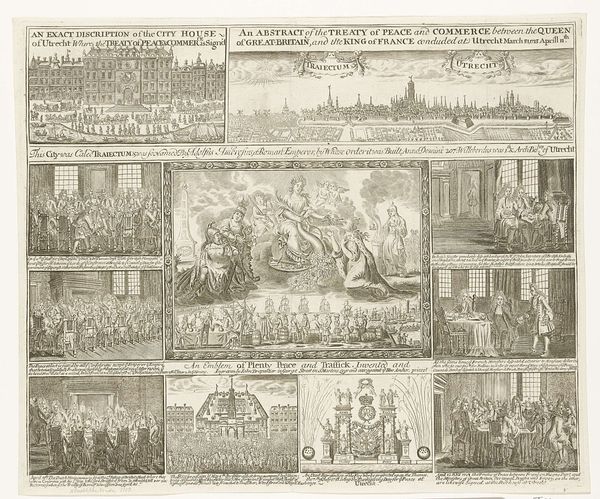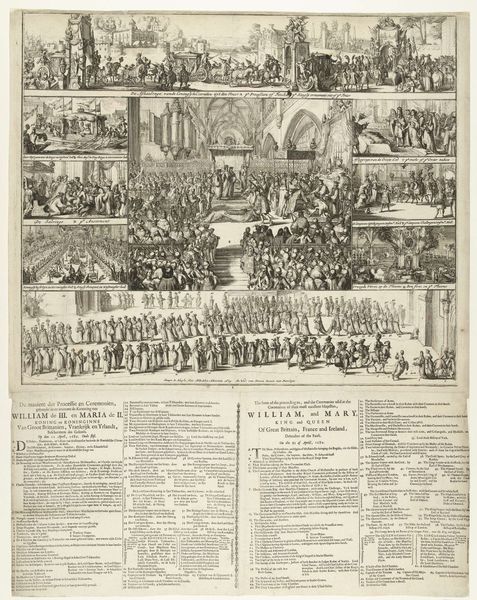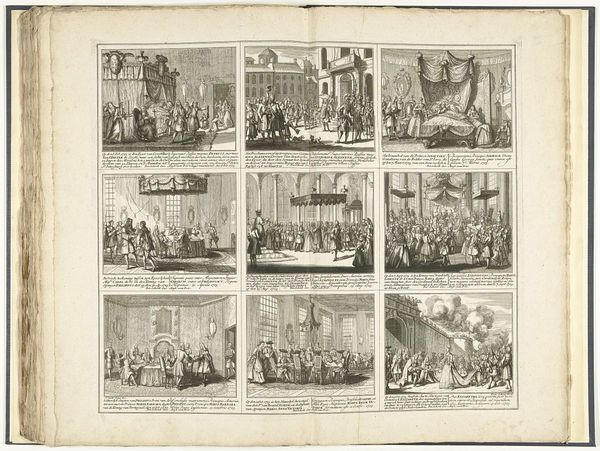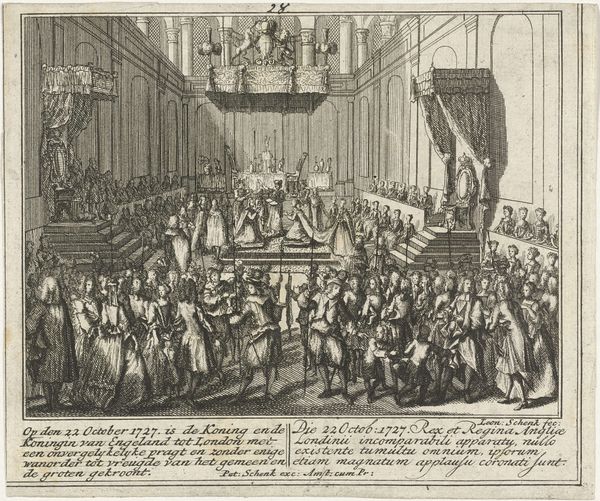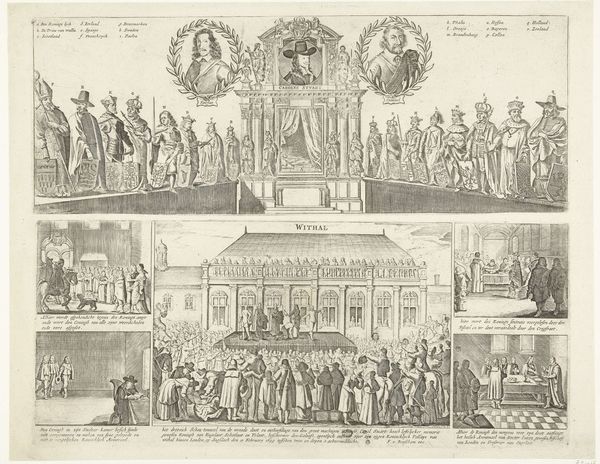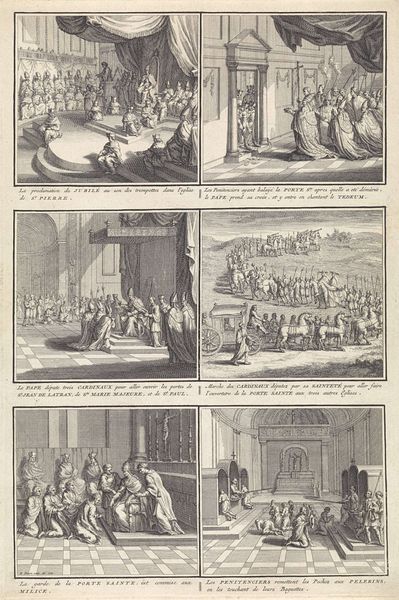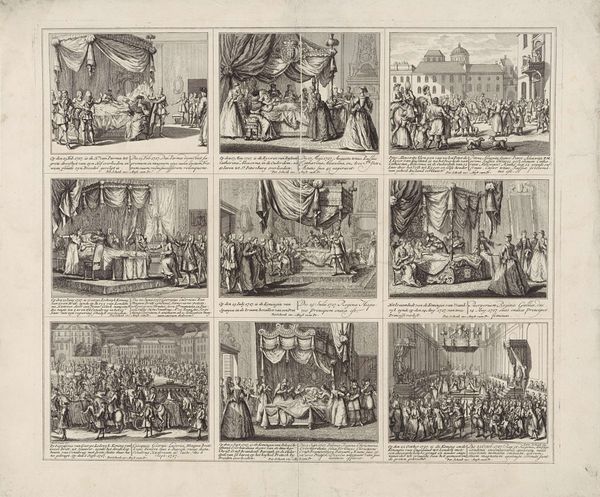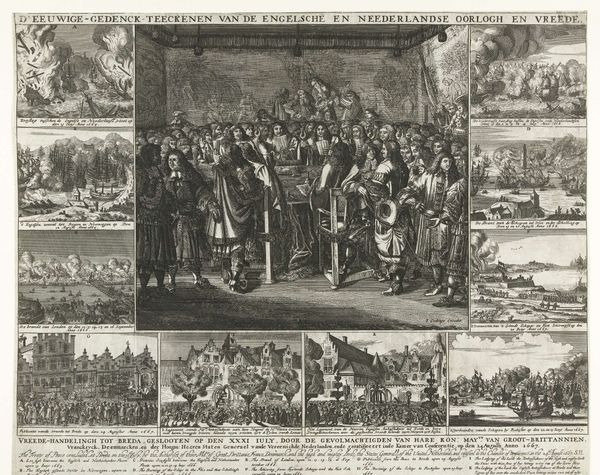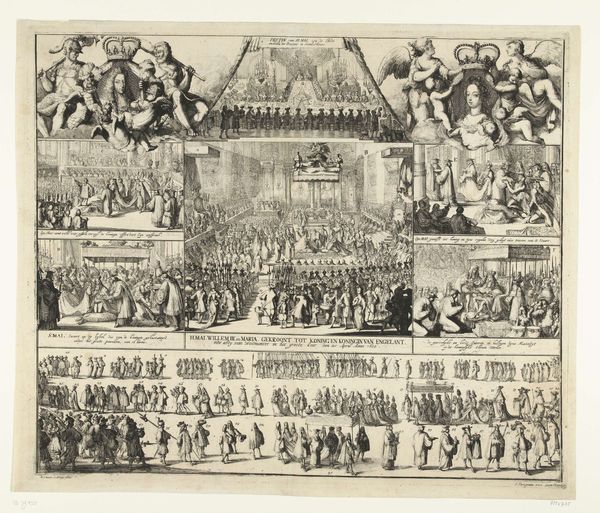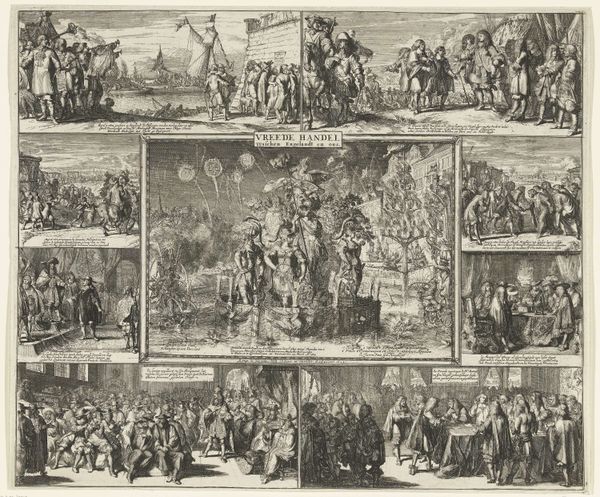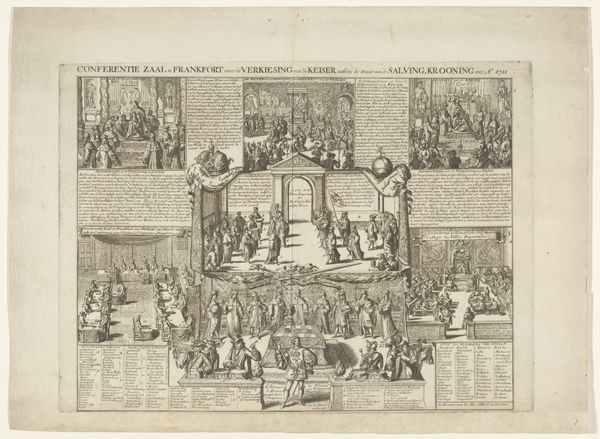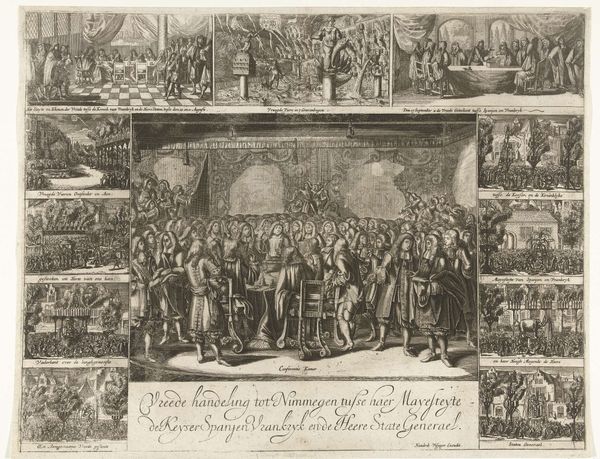
print, engraving
#
baroque
# print
#
old engraving style
#
cityscape
#
history-painting
#
engraving
Dimensions: height 510 mm, width 602 mm
Copyright: Rijks Museum: Open Domain
Editor: Here we have “Vrede van Utrecht, 12 mei 1713,” created between 1697 and 1713. It’s a print by Laurens Scherm, housed at the Rijksmuseum. It feels very... densely packed with information. I’m particularly struck by how it combines the panoramic view with these almost cartoon-like scenes. What do you see in this piece? Curator: I see a fascinating visual record, steeped in political ideology and the anxieties of its time. It’s more than just a depiction of the Treaty of Utrecht; it’s a carefully constructed narrative about power and legitimacy. Editor: Can you elaborate on that narrative aspect? Curator: Look at the juxtaposition of the idyllic cityscape of Utrecht above with the representations of the negotiations below. What tensions do you observe between these elements? Think about how the engraver might be trying to convey something beyond the literal event. Is this solely a representation of peace, or something else is conveyed? Editor: Well, the cityscape feels stable and orderly, but the scenes below have a more staged quality, especially with all these almost identical looking aristocrats involved in discussions. The landscape above seems idealized, but there is little of actual peace visible among men below? Curator: Exactly. Considering that Utrecht was the site of intense political maneuvering and negotiation, this image downplays those realities to present a picture of unified celebration and legitimacy. Consider, also, who might have commissioned this piece. Might this visual representation reinforce a particular social hierarchy, where power flows downward from some deity-like authority into aristocracy? It presents a particular narrative—one that papers over any societal struggles, to secure an idea of the dominant order. Editor: I hadn’t thought about it that way. Now I see how much this image tries to tell a specific story that reflects political ideology. Thank you! Curator: Absolutely, it is really fruitful to approach art, especially historical works, this way! It really shows how images actively participate in the power dynamics of their time.
Comments
No comments
Be the first to comment and join the conversation on the ultimate creative platform.

